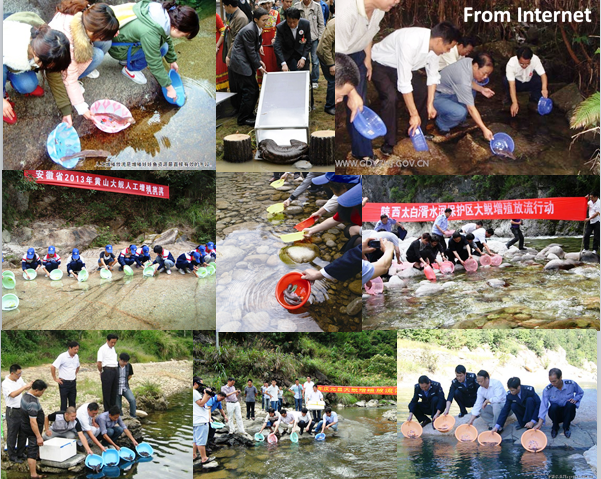Edge fellow Fang Yan shares news of an initiative to help the recovery of wild Chinese giant salamander populations.
During 23rd September to 23rd October, the Chinese ministry of agriculture organized an activity to protect wild aquatic animals. In the first day of this activity, 1200 artificially bred Chinese giant salamanders (CGS) were released into the stream of Huangshan in Anhui province.
Releasing these animals to their natural habitat is an important measure to ensure the protection of endangered animals. This activity could supplement and aid the recovery of the wild population. Designed to boost the wild population, a captive breeding program of CGS has been successfully established. Lots of bred individuals have been released into the wild. According to the information from internet, since 2008 at least 15000 individuals were released to the wild in 11 provinces, including Anhui, Fujian, Gansu, Guangdong, Guangxi, Henan, Hunan, Jiangxi, Shanxi, Shaanxi and Zhejiang.

The release of captive bred individuals should improve the number of CGS in the wild. But in the fact, most releases of CGS failed to boost the wild populations likely due to the limitation of the factors such as water quality, food supply and safety. For a better conservation for CGS, some advanced work should be done to guarantee the successfulness of the release, such as the chemical test for water quality, the genetic test for the origin and disease of CGS.